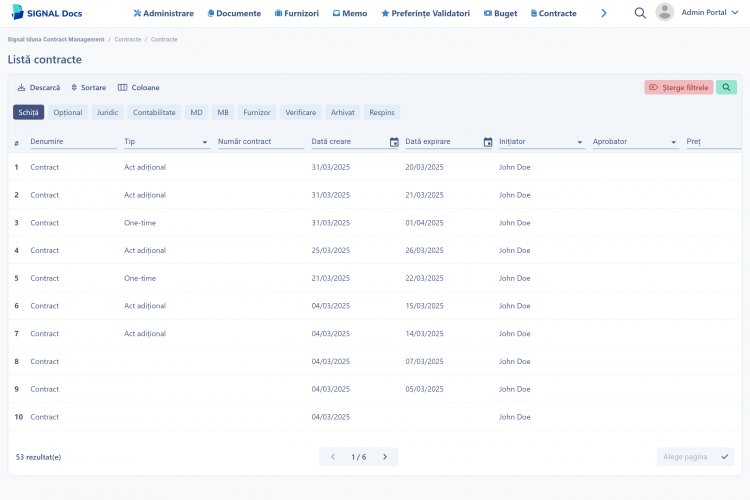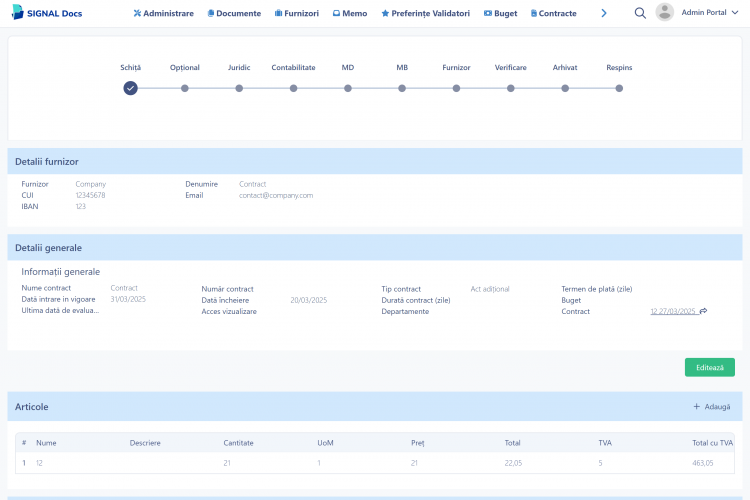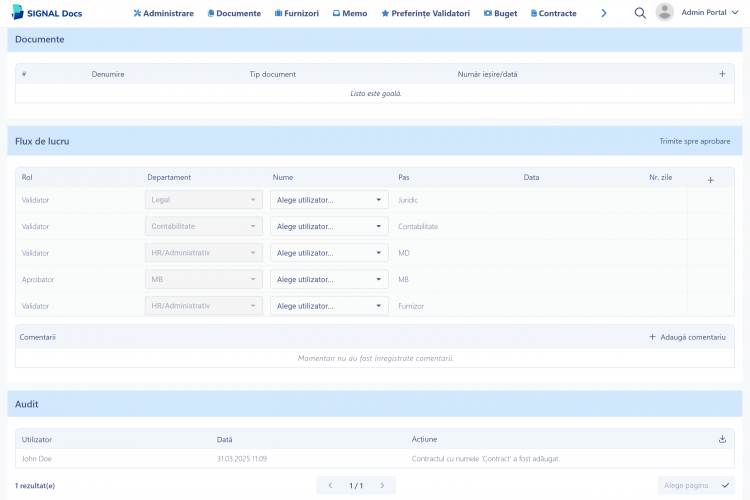Implementation of a Centralized Digital Contract Management System for Provider Oversight and Compliance
Digitizing Trust: Contract Management Success in Insurance
This project was delivered for an insurance company operating in Bucharest, Romania. As the company expanded its network of providers, including medical services, IT vendors, and legal consultants, contract oversight became increasingly complex. The organization needed a digital solution to reduce risk, control costs, and streamline the full lifecycle of contract management.
Initial Challenges
The company managed a growing number of contracts using outdated tools such as spreadsheets, emails, and scattered file systems. This fragmented approach led to missed renewals, untracked service levels, and poor visibility into obligations and vendor performance. Procurement, legal, and finance teams faced increasing pressure due to the administrative burden and compliance risk tied to unmanaged contracts.
Procurement teams struggled to track renewal dates and negotiate terms effectively. Legal staff spent too much time locating documents and reviewing obligations manually. Finance lacked visibility into contract value and vendor spend, complicating budgeting and forecasting. Operations experienced service disruptions from unclear agreements, while executives lacked the insights needed for strategic decisions. These challenges escalated with each new provider, making contract management a critical weakness for the business.
The Smart Solution
To address these challenges, the company implemented a centralized Contract Management platform tailored to the needs of the insurance sector. The solution consolidated all provider agreements into a single, searchable system and introduced automated workflows for renewals, approvals, and compliance checks. Real-time visibility into contract terms, obligations, and vendor performance enabled cross-functional teams to collaborate more effectively. The platform also provided complete audit trails and reporting capabilities, supporting regulatory readiness and better decision-making.
Implementation Insights
The implementation process began with a comprehensive audit of existing contracts and workflows. Key pain points were identified and addressed through system configuration and role-based access controls. Legal, procurement, and operations teams participated in design and onboarding to ensure the platform aligned with real-world needs. Automation was introduced incrementally to minimize disruption and allow users to adapt. Training and support were provided throughout the rollout, ensuring smooth adoption and long-term success. As a result, the organization transitioned from manual, reactive contract handling to a proactive and strategic contract management approach.
Results & Impact
The Contract Management platform delivered measurable improvements across the company’s operations and risk management practices.
Quantitative Results:
- 80% faster contract turnaround time by streamlining approvals and version control
- 100% visibility into all active contracts and full compliance with audit requirements
- 60% reduction in administrative workload by automating tracking and renewals
- Elimination of missed deadlines through automated alerts and notifications
Qualitative Results:
- Strong positive feedback from users regarding accessibility and usability
- Cross-department collaboration improved through shared visibility and transparent workflows
- Increased control over vendor relationships and provider performance tracking
- Enhanced strategic planning with real-time insights into contract terms and financial exposure
These outcomes positioned contract management as a strategic capability within the organization, supporting both operational efficiency and compliance excellence.
Lessons Learned & Key Takeaways
Several critical insights emerged during the implementation. Centralizing all contracts into a single repository proved essential for transparency and risk control. Automating renewals and compliance workflows saved time and significantly reduced the chance of human error. Collaboration between legal, procurement, and operations teams was crucial for success, requiring shared access and coordinated workflows. Real-time visibility into contract performance enabled better vendor negotiations and more informed business planning. Finally, effective change management, including stakeholder engagement and structured training, played a key role in achieving a successful transition. This project demonstrated that with the right tools and processes, contract management can become a powerful driver of strategic value.







